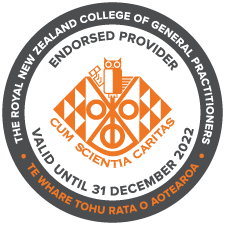1. Ministry of Health. Cardiovascular Disease Risk Assessment and Management for Primary Care. Wellington. 2018. www.health.govt.nz/publication/cardiovascular-disease-risk-assessment-and-management-primary-care
2. Ministry of Health. Health System Indicators framework. 13 December 2021. www.health.govt.nz/new-zealand-health-system/health-system-indicators-framework (Accessed 8 February 2022)
3. HQSC New Zealand. Health System Indicators framework.10 December 2021. https://reports.hqsc.govt.nz/HSI/_w_00b10f0f/#!/ (Accessed 8 February 2022)
4. Johnston M. Health system gets new episode of the number games. New Zealand Doctor Rata Aotearoa. 1 September 2021. www.nzdoctor.co.nz/article/print-archive/health-system-gets-new-episode-number-games
5. The National Heart Foundation of New Zealand. Heart Foundation White Paper. Improving heart health outcomes for New Zealand. 4 August 2020. www.heartfoundation.org.nz/about-us/news/media-releases/urgent-call-for-a-co-ordinated-national-heart-health-action-plan
6. Ministry of Social Development. National Level Benefit Data for quarter ending September 2019. (Accessed March 2020).
7. Ministry of Health. Mortality Data Table 2017 (provisional). 2019. (Accessed March 2022).
8. He Ako Hiringa. Bulletin 10: Cardiovascular disease – a risky business. 28 January 2022. www.akohiringa.co.nz/education/cardiovascular-disease-a-risky-business
9. Ministry of Health. National Mortality Collection. 2014–2019 data. www.health.govt.nz/nz-health-statistics/national-collections-and-surveys/collections/mortality-collection (Accessed August 2021).
10. Ministry of Health. Pharmaceutical Collection. 2014–2019 data. www.health.govt.nz/nz-health-statistics/national-collections-and-surveys/collections/pharmaceutical-collection (Accessed August 2021)
11. Ministry of Health. Background to cardiovascular disease risk assessment and management. 16 January 2022. www.health.govt.nz/our-work/diseases-and-conditions/cardiovascular-disease/background-cardiovascular-disease-risk-assessment-and-management
12. BPACnz. Prescribing statins to reduce cardiovascular risk. 3 May 2021. https://bpac.org.nz/2021/statins.aspx
13. US National Library of Medicine. Eliminate Coronary Artery Disease (ECAD). Last update posted 15 May 2018. https://clinicaltrials.gov/ct2/show/NCT02245087
14. Adults US Preventive Services Task Force. Statin Use for the Primary Prevention of Cardiovascular Disease: Preventive Medication. Final Recommendation Statement 13 November 2016. www.uspreventiveservicestaskforce.org/uspstf/recommendation/statin-use-in-adults-preventive-medication
15. American College of Cardiology. Improving cardiovascular risk communications with your patients. 2022. www.acc.org/tools-and-practice-support/risk-communications (Accessed 6 March 2022).
16. Lipkus IM, Samsa G, Rimer BK. General performance on a numeracy scale among highly educated samples. Med Decis Making. 2001;21(1):37–44. doi:10.1177/0272989X0102100105
17. Navar AM, Wang TY, Mi X, et al. Influence of Cardiovascular Risk Communication Tools and Presentation Formats on Patient Perceptions and Preferences. JAMA Cardiol. 2018;3(12):1192–99. doi:10.1001/jamacardio.2018.3680
18. Zipkin DA, Umscheid CA, Keating NL, et al. Evidence-based risk communication: a systematic review. Ann Intern Med. 2014;161(4):270–80. doi:10.7326/M14-0295
19. Akl EA, Oxman AD, Herrin J, et al. Framing of health information messages. Cochrane Database Syst Rev. 2011;(12):CD006777. doi:10.1002/14651858.CD006777.pub2
20. Schrager SB. Five Ways to Communicate Risks So That Patients Understand. Fam Pract Manag. 2018;25(6):28–31.
21. Wells S, Kerr A, Eadie S, Wiltshire C, Jackson R. “Your Heart Forecast”: a new approach for describing and communicating cardiovascular risk? Heart. 2010;96(9):708–13. doi:10.1136/hrt.2009.191320
22. Duffy EY, Ashen D, Blumenthal RS, et al. Communication approaches to enhance patient motivation and adherence in cardiovascular disease prevention. Clin Cardiol. 2021;44(9):1199–1207. doi:10.1002/clc.23555
23. Frost H, Campbell P, Maxwell M, et al. Effectiveness of Motivational Interviewing on adult behaviour change in health and social care settings: A systematic review of reviews. PLoS One. 2018;13(10):e0204890. doi:10.1371/journal.pone.0204890
24. He Ako Hiringa. Bulletin 4: Being culturally competent is not enough. June 2021. www.akohiringa.co.nz/sites/default/files/public/2021-06/HAH%20Bulletin%20%234_FINAL.pdf
25. Medical Council of New Zealand. Statement on cultural safety. October 2019. www.mcnz.org.nz/assets/standards/b71d139dca/Statement-on-cultural-safety.pdf
26. Curtis E, Jones R, Tipene-Leach D, et al. Why cultural safety rather than cultural competency is required to achieve health equity: a literature review and recommended definition. Int J Equity Health 2019;18:174. doi.org/10.1186/s12939-019-1082-3
27. Health Navigator. Cultural safety and cultural competence for healthcare providers. Updated October 2022. https://healthify.nz/healthcare-providers/c/cultural-safety-hcps



